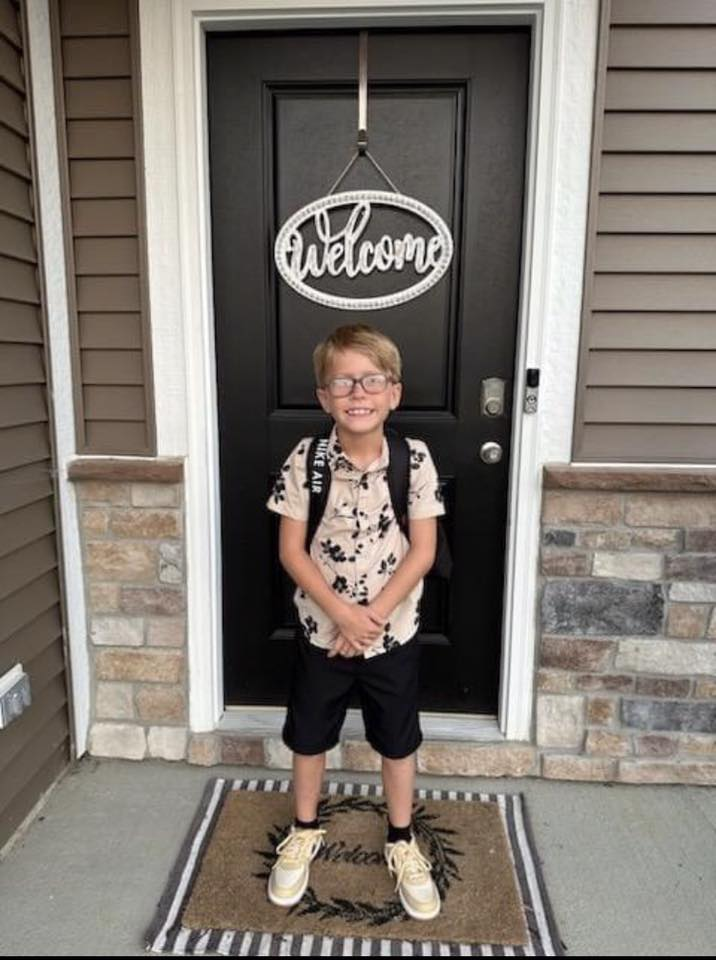The heartbreaking story of 10-year-old Sammy Teusch from Indiana has once again brought the grave consequences of bullying to the forefront of public consciousness. Sammy tragically took his own life in May 2024, leaving behind grieving parents, siblings, and a community reeling from the devastating loss. His death underscores the urgent need to address bullying in schools and create safer environments for all children.
The Tragic Death of Sammy Teusch

On May 5, 2024, Sammy was found by his 13-year-old brother, Xander, at their home. The unimaginable loss came after years of relentless bullying, according to his family. His parents, Sam and Nicole Teusch, have since filed a wrongful death lawsuit against Greenfield-Central Community School Corporation, accusing the school district of failing to protect their son despite numerous warnings and complaints.
The lawsuit alleges that the school and its staff showed “callous indifference” to the bullying Sammy endured, which they claim directly led to his tragic death. According to the family, the bullying included vile nicknames, physical assaults, and emotional torment that went largely unaddressed by the school.
The Allegations of Persistent Bullying
Sammy’s parents describe a harrowing pattern of bullying that began when he was in third grade and continued through fourth grade. The lawsuit details incidents of physical and verbal abuse that were reported to the school but allegedly met with insufficient action.
One of the most shocking allegations involves classmates calling Sammy “Dahmer,” a reference to the infamous serial killer Jeffrey Dahmer. Even more disturbing, the lawsuit claims that when this was reported to a teacher, the response was dismissive, with the teacher allegedly remarking that Sammy “somewhat resembled Jeffrey Dahmer.”
As the bullying persisted, Sammy began to act out in class—a clear cry for help. Instead of addressing the underlying issue, he was reprimanded for being disruptive. Efforts by school staff, such as allowing Sammy to eat lunch in the principal’s office, appear to have done little to address the root of the problem.
Escalation of Abuse in Fourth Grade
When Sammy transitioned to Greenfield Intermediate School, the bullying reportedly escalated. The lawsuit describes incidents where Sammy was physically assaulted, including being hit over the head with an iPad, which left him with a black eye and injuries to his neck and shoulders.
According to court documents, Sammy was often chased during breakfast periods, forcing him to hide in bathroom stalls to escape his tormentors. Despite these repeated incidents and numerous complaints from his parents—approximately 20, as stated in the lawsuit—the school allegedly failed to take meaningful action.
The family claims the administration engaged in victim-blaming, suggesting that Sammy was the instigator and attributing the bullying to his “mental problems.” This response, they argue, only deepened Sammy’s despair.
A Systemic Failure?

The Teusch family’s lawsuit highlights what they believe to be systemic failures within the school district. They accuse the administration of dismissing their concerns, failing to discipline the bullies, and perpetuating a culture of victim-shaming.
In a statement following Sammy’s death, the school district expressed condolences to the family and stated that they had conducted an internal review of the allegations. However, they maintained that they found “nothing to validate” the claims of negligence.
This disconnect between the family’s experiences and the school’s response raises broader questions about how schools handle bullying and whether current protocols are sufficient to protect vulnerable students.
The Emotional and Social Impact of Bullying
Bullying is not just a childhood issue—it’s a pervasive problem with long-lasting effects on mental health and well-being. For children like Sammy, the daily stress of harassment can lead to feelings of isolation, hopelessness, and despair.
Research shows that victims of bullying are at a significantly higher risk of developing anxiety, depression, and suicidal thoughts. The emotional scars left by bullying can persist well into adulthood, affecting self-esteem, relationships, and career prospects.

The tragic loss of Sammy underscores the urgent need for schools to adopt proactive measures to identify and address bullying before it escalates.
The Role of Schools in Preventing Bullying
Schools are meant to be safe havens for learning and growth, but bullying undermines this foundation. To protect students, schools must implement comprehensive anti-bullying policies that go beyond lip service. This includes:
- Clear Reporting Systems: Establishing easy and anonymous ways for students and parents to report bullying incidents.
- Accountability: Holding bullies accountable with appropriate disciplinary measures while also offering them resources to address their behavior.
- Support for Victims: Providing counseling and mental health services to help victims cope with the emotional toll of bullying.
- Teacher Training: Equipping educators with the skills to recognize and address bullying effectively.
- Fostering Inclusion: Promoting a culture of empathy, kindness, and inclusion through school-wide programs and initiatives.
Empowering Parents and Communities
Parents play a crucial role in advocating for their children and holding schools accountable. In Sammy’s case, his parents’ efforts to seek help were met with inadequate responses, highlighting the need for stronger collaboration between schools and families.

Communities also have a part to play in combating bullying. Raising awareness, encouraging open dialogue, and supporting anti-bullying campaigns can create a collective effort to protect children and prevent tragedies like Sammy’s.
Moving Forward: A Call for Change
The loss of Sammy Teusch is a heartbreaking reminder of the devastating impact bullying can have on young lives. It is a call to action for schools, parents, and communities to take bullying seriously and prioritize the safety and well-being of all students.
No child should ever feel that their only escape from pain is to take their own life. By addressing the root causes of bullying, holding institutions accountable, and fostering a culture of empathy, we can honor Sammy’s memory and work toward a future where every child feels safe, valued, and supported.
Conclusion
Sammy’s story is not just a tragedy—it’s a wake-up call. His death underscores the urgent need for systemic change in how schools handle bullying. For his family, the lawsuit is not just about seeking justice but about ensuring no other child suffers the same fate.
As we reflect on Sammy’s life, let us commit to creating a world where every child can thrive without fear of harassment or exclusion. His story reminds us that we must act now to make schools places of safety, compassion, and hope.


